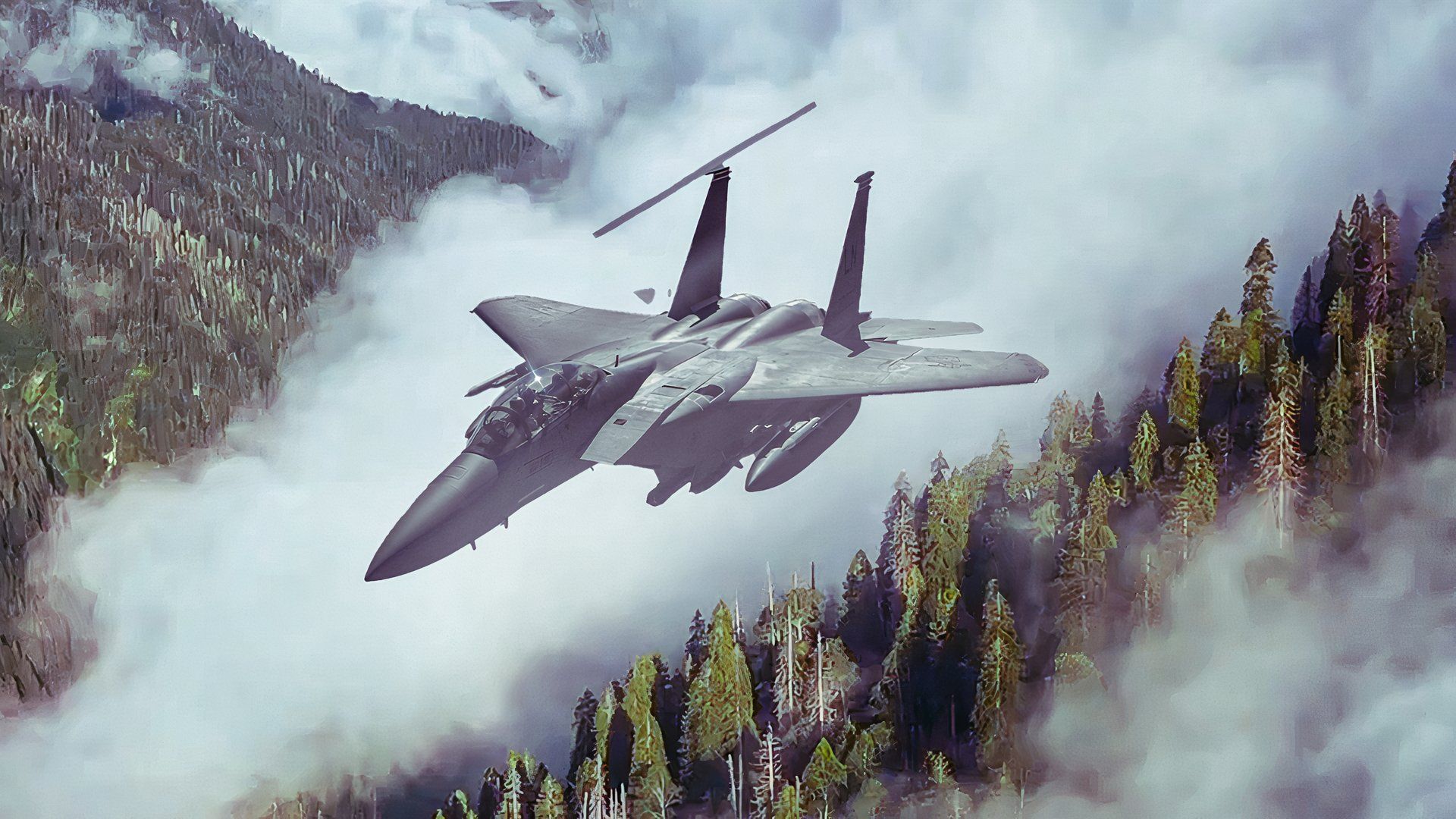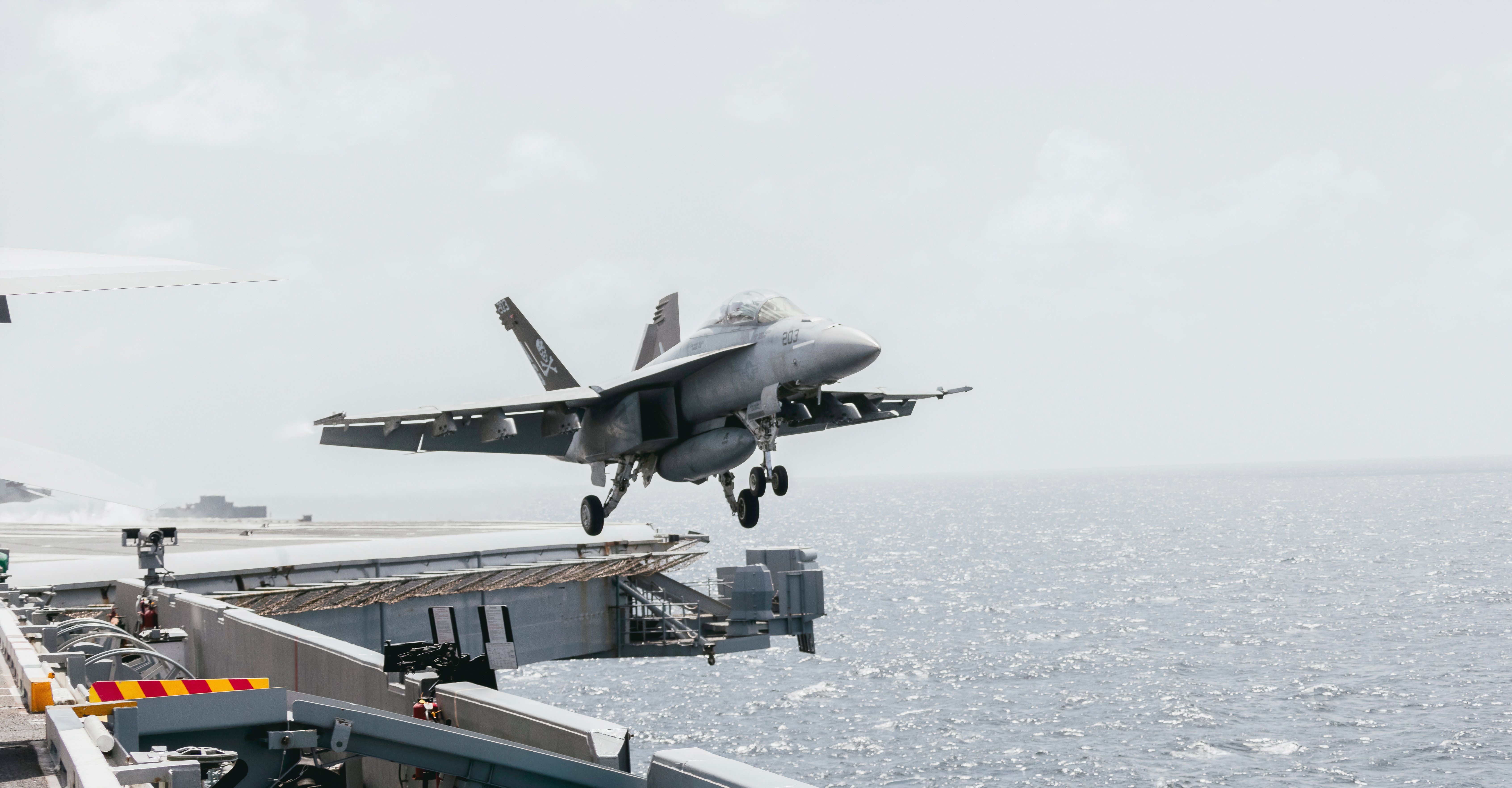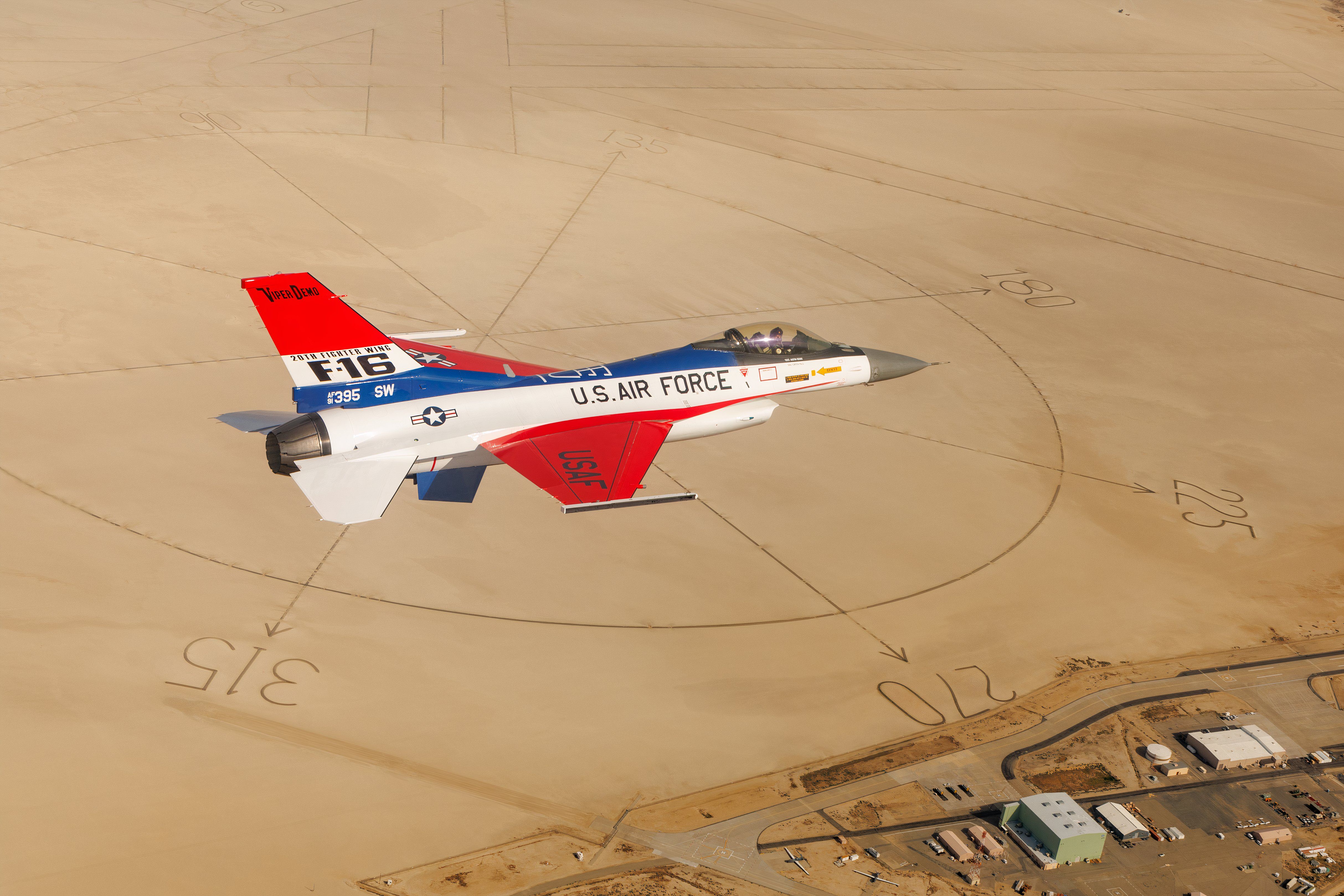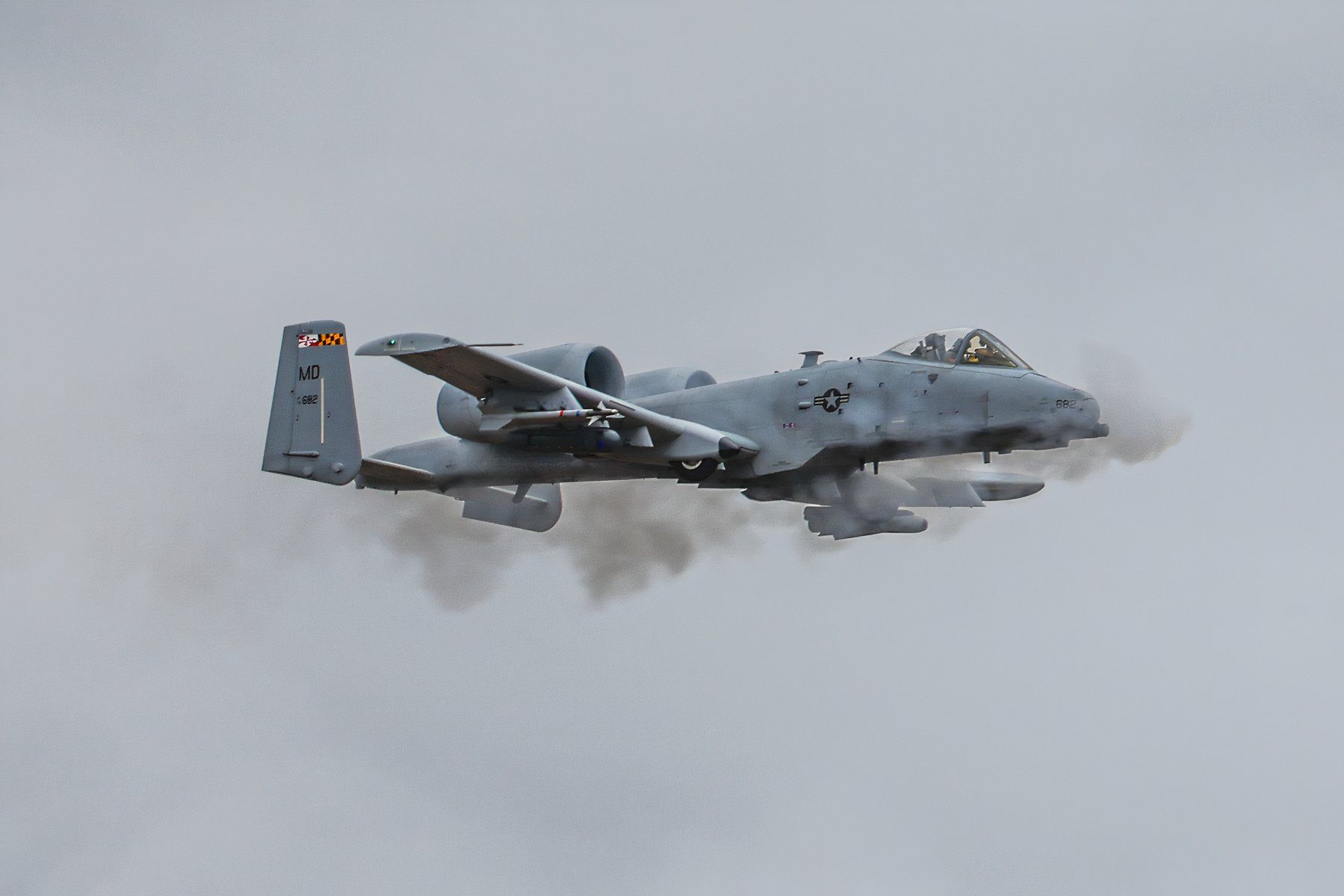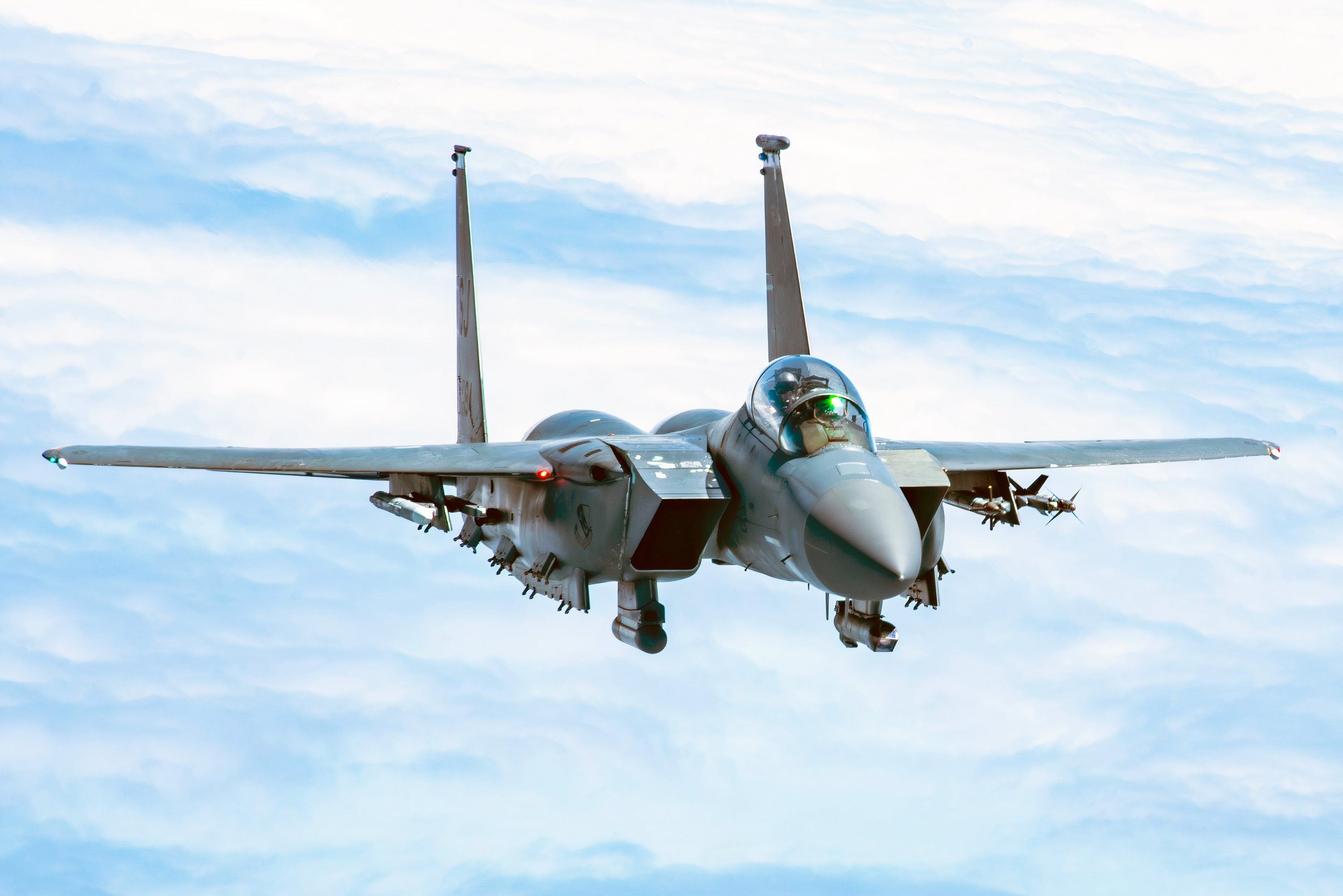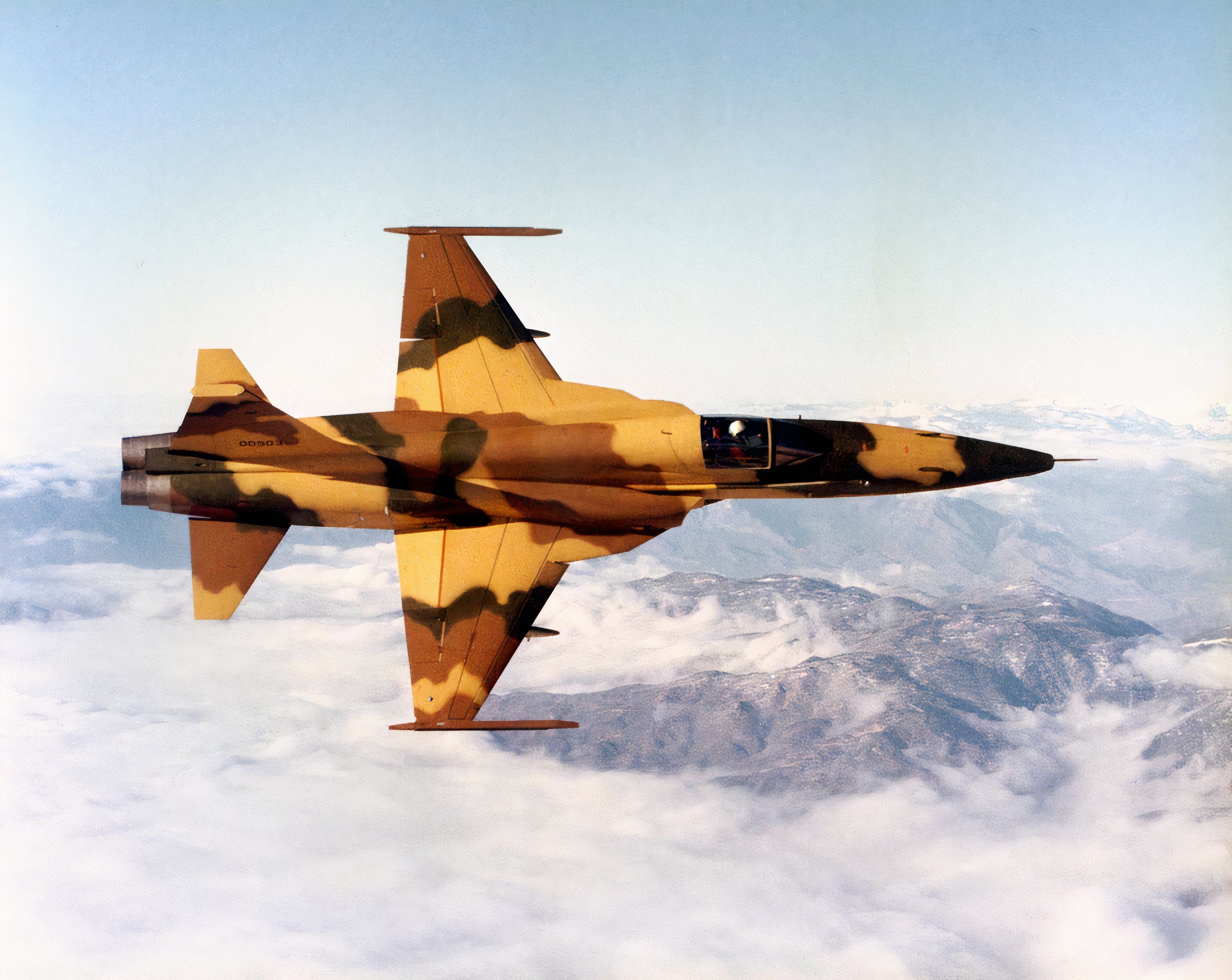The US Military has a strong fleet of fighter jets, many of which have been in service for decades. Simple Flying looks at the top 5 US fighter jets with the longest service life.
5
F/A-18 Hornet
Entered service in 1983
The Hornet completed its first flight in 1978, and five years later, in 1983, it entered operational service with the Marine Corps and, in 1984, with the U.S. Navy. Its entry into military service initiated the process of fleet replacement for the F-4 Phantom and the A-7 Corsair.
Photo: U.S. Navy
The F/A-18 Hornet was designed to fulfill mission requirements for air-to-air and air-to-ground missions. Covering the tactical spectrum, the Hornet can perform such roles as air superiority, fighter escort, maritime strike, reconnaissance, forward air control, and more.
The F/A-18 Hornet is the primary workhorse of Marine Corps tactical aviation. It supports the Corps’ global missions. This aircraft is lighter and more maneuverable than the Super Hornet, which is oriented towards carrier operations.
Specifications for the F/A-18 Hornet
|
Technical Specifications |
Numerical Data |
|---|---|
|
Crew |
1 or 2 depending on the variant |
|
Length |
60.7 ft |
|
Width |
44.9 ft |
|
Height |
16 ft |
|
Empty Weight |
22,928 lb. |
|
Maximum Takeoff Weight |
51,809 lb. |
|
Maximum Speed |
1,190 mph |
|
Service Ceiling |
50,033 ft |
|
Operational Range |
1,243 miles |
|
Rate of Climb |
50,000 ft/min |
|
Onboard weapon systems |
1 x 20mm M61 rotary cannon (six barrels) |
|
Powerplant |
2 x General Electric F404-GE-402 afterburning engines. Each unit produce’s 17,750 lb. of thrust. |
4
F-16 Fighting Falcon
Entered service in 1978
The F-16 Fighting Falcon’s story begins in the 1970s with a small group of engineers and defense analysts known as “The lightweight mafia.” This motley crew sought to design an alternative to fighters of the time that had become increasingly heavy and had decreased maneuverability.
Photo: U.S. Air Force
This team aimed to substitute excess weight and heavy payloads for greater speed and enhanced maneuverability. The desired end product was an affordable fighter that could easily outmaneuver enemy aircraft and strike with missiles or autocannon fire.
This combat aircraft has been so successful that, since entering production in 1975, more than 4,500 F-16s have been manufactured for 26 nations. With 300 potential future sales in the near future (with the Block 70/72 variant), Lockheed Martin still sees a bright future for this fighter jet.
Even Vietnam could be a future customer of the F-16, as it sees the deterrent value in this aircraft during heightened tensions in the South China Sea region.
Specifications for the F-16 Fighting Falcon
|
Technical Specifications |
Numerical Data |
|---|---|
|
Crew |
1 |
|
Length |
49.2 ft |
|
Width |
32.8 ft |
|
Height |
15.7 ft. |
|
Empty Weight |
18,960 lb. |
|
Maximum Takeoff Weight |
42,329 lb. |
|
Maximum Speed |
1,317mph |
|
Cruise Speed |
856 mph |
|
Service Ceiling |
50,000 ft |
|
Operational Range |
2,622 miles |
|
Rate of Climb |
50,000 ft/min |
|
Onboard weapon systems |
1 x 20mm M61A1 rotary cannon (six barrels) |
|
Powerplant |
1 x General Electric F110-GE-100 Afterburning engine. This unit produces 28,600 lb. of thrust. |
3
A-10 Thunderbolt II
Entered service in 1977
It’s not fast, it’s not sleek, and it’s definitely not sexy…but it can eat tanks with great ease, and that was the primary reason for this monster’s birth.
During the Cold War, which lasted essentially from 1949 to 1991, there was a well-founded fear that a Soviet ground invasion would overrun Western Europe. The Soviets had a veritable sea of soldiers and tanks that they could throw into a potential invasion. US military planners needed an airpower component to peel back the Soviet armored formations and provide reliable close-air support.
Photo: U.S. Air Force
The answer was the A-10 Thunderbolt II, with planning beginning in the 1960s and the first delivery in 1975. The airframe was designed with pilot survivability as a top priority. Additionally, critical systems redundancy enabled the A-10 to continue operating even after taking significant damage. With its excellent maneuverability at low air speeds and altitude, it could and can loiter near a battlefield for extended periods of time, providing ground forces with tier-one support.
Aside from guided munitions, the A-10 could spew out up to 4,200 rounds per minute if it faced off against enemy tanks. Their PGU-14/B Incendiary rounds with a depleted uranium core could turn a perfectly good tank into a smoldering hulk in seconds.
The future of the A-10 is still up in the air (no pun intended), and this is a contentious topic for many aviators and aviation enthusiasts.
Specifications for the A-10 Thunderbolt II
|
Technical Specifications |
Numerical Data |
|---|---|
|
Crew |
1 |
|
Length |
53.3 ft |
|
Width |
57.7 ft |
|
Height |
14.7 ft |
|
Empty Weight |
27,999 lb. |
|
Maximum Takeoff Weight |
51,998 lb. |
|
Maximum Speed |
439 mph |
|
Service Ceiling |
34,695 ft |
|
Operational Range |
474 miles |
|
Rate of Climb |
6,000 ft/min |
|
Onboard weapon systems |
1 x 30mm, General Electric, GAU-8/A rotary cannon (seven barrels) |
|
Powerplant |
2 x General Electric TF34-GE-100 non-afterburning turbofan engines. These units produce 9,065 lb. of trust each. |
2
F-15 Eagle
Entered service in 1976
The F-15 Eagle is an all-weather, highly maneuverable tactical fighter designed to smash into enemy airspace and gain and maintain air supremacy over a battlefield. The story of the F-15 began in the 1960s due to the F-4 Phantom’s poor close air combat performance.
Photo: U.S.Air Force
McDonnell Douglas
was selected to design and produce this future aircraft, and on June 26, 1972, the first F-15 prototype rolled out of their factory. The first flight of the F-15A was made in July 1972, and by November 1974, the first F-15 was delivered to the 58th Tactical Fighter Training Wing located at Luke Air Force Base in Arizona. At this location, training began with both the F-15A and B variants.
This rugged aircraft continues to serve, and the program’s future lies with the
F-15EX
. This latest iteration has numerous improvements, and the Air Force is keen to purchase as many as 200 of them.
Specifications for the F-15 Eagle
|
Technical Specifications |
Numerical Data |
|---|---|
|
Crew |
2 (Pilot & Weapon systems officer) |
|
Length |
63.8 ft |
|
Width |
42.8 ft |
|
Height |
18.5 ft |
|
Empty Weight |
27,000 lb. |
|
Maximum Takeoff Weight |
56,000 lb. |
|
Maximum Speed |
1,875mph |
|
Service Ceiling |
65,010 ft |
|
Operational Range |
2,402 miles |
|
Rate of Climb |
50,000 ft/min |
|
Onboard weapon systems |
1 x 20mm M6A1 rotary cannon (six barrels) |
|
Powerplant |
2 x Pratt & Whitney F100-PW-100 afterburning turbofan engines. These units produce 25,000 lb. of thrust each |
1
F-5 Tiger
Entered service in 1964
The development of the F-5 Tiger began in 1954 when a team from Northrop Grumman toured Europe and Asia to assess the defense needs of NATO and SEATO countries.
As a result of this tour, the team initiated a design study for a lightweight, supersonic jet fighter that would be affordable, easy to maintain, and capable of operating from short runways. By 1956, the US Air Force did not show interest in operating it in large numbers, but it did maintain small numbers of its trainer version, the T-38 Talon.
On April 25, 1962, the Department of Defense announced that it would offer the F-5 for export within the Military Assistance Program. In total, more than 2,600 were built by Northrop Grumman, including those under co-production and licensing agreements with Canada, Taiwan, South Korea, Spain, and Switzerland.
According to Northrop Grumman:
“From the F-5’s first delivery in 1964…every aircraft was delivered on schedule, at or below the contract price, and with performance as promised. Approximately two-thirds of the original production F-5’s remain operational in 26 countries, including the United States.”
Presently, the US Navy operates the F-5 in its adversary squadrons, which simulate enemy aircraft during training missions. The Air Force uses these aircraft for a similar training role.
Specifications for the F-5 Tiger
|
Technical Specifications |
Numerical Data |
|---|---|
|
Crew |
1 |
|
Length |
47.4 ft |
|
Width |
26.7 ft |
|
Height |
13.3 ft |
|
Empty Weight |
9,722 lb. |
|
Maximum Takeoff Weight |
24,723 lb. |
|
Maximum Speed |
1,077 mph |
|
Service Ceiling |
51,804 ft |
|
Operational Range |
1,543 miles |
|
Rate of Climb |
28,700 ft/min |
|
Onboard weapon systems |
2 x 20mm M39A2 automatic cannons |
|
Powerplant |
2 x General Electric J85-GE21 afterburning turbojet engines. These units produce 5,000 lb. of thrust each. |

